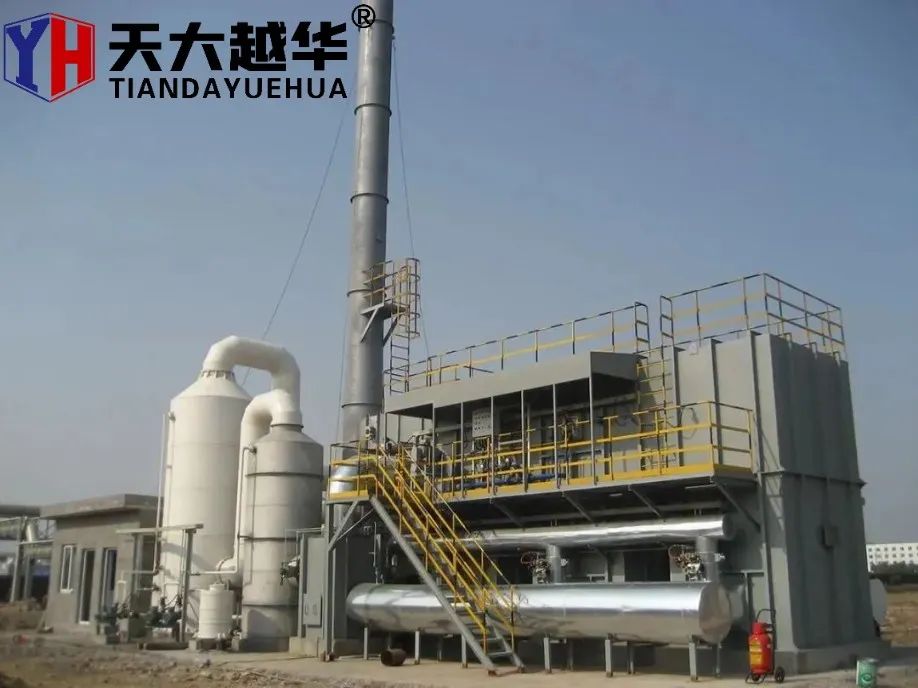Exploring Limitations: Understanding the Types of Waste Processed by Oxidizer Incinerator RTOs
2024-04-08
In the realm of industrial pollution control, Oxidizer Incinerator Regenerative Thermal Oxidizers (RTOs) stand as formidable tools for neutralizing volatile organic compounds (VOCs) and hazardous air pollutants (HAPs). While RTOs offer robust capabilities for treating a wide range of waste streams, it's essential to understand that they are not universally applicable to all types of waste. In this blog, we'll explore the limitations of Oxidizer Incinerator RTOs concerning the types of waste they can effectively process.
Understanding Oxidizer Incinerator RTOs
Oxidizer Incinerator RTOs are advanced air pollution control devices designed to achieve high destruction efficiency rates for VOCs and HAPs emitted during industrial processes. These systems operate by subjecting pollutants to high temperatures (typically 1400°F to 1800°F or 760°C to 980°C) within a combustion chamber, where they undergo complete oxidation and conversion into harmless byproducts such as carbon dioxide and water vapor. RTOs are renowned for their energy efficiency, pollutant removal efficiency, and compliance with stringent regulatory standards.
Limitations on Waste Types
While Oxidizer Incinerator RTOs are versatile and capable of treating a wide range of waste streams, certain limitations exist regarding the types of waste they can effectively process. These limitations may include:
1. Highly Corrosive or Abrasive Materials: RTOs may not be suitable for processing waste streams containing highly corrosive or abrasive materials that could damage the combustion chamber or heat exchange beds. Such materials may necessitate specialized corrosion-resistant or refractory materials, which could increase maintenance costs and reduce operational lifespan.
2. Particulate Matter: While RTOs are effective at treating gaseous pollutants, they may have limitations in handling high concentrations of particulate matter. Heavy particulate loads can impair heat exchange efficiency and lead to fouling or clogging of heat exchange media, reducing system performance and necessitating frequent maintenance.
3. Extreme Temperatures or Pressures: RTOs are designed to operate within specific temperature and pressure ranges to ensure safe and efficient combustion. Waste streams containing materials with extreme temperature or pressure requirements may pose challenges for RTO operation and require additional equipment or pre-treatment measures to achieve suitable conditions.
4. Inorganic Compounds: While RTOs are effective at oxidizing organic compounds, they may have limitations in treating waste streams containing high concentrations of inorganic compounds such as heavy metals or salts. Inorganic compounds may require specialized treatment processes or alternative pollution control technologies to achieve adequate removal efficiency.
Overcoming Limitations
To overcome limitations associated with the types of waste processed by Oxidizer Incinerator RTOs, industrial facilities can implement various strategies:
- Pre-Treatment: Pre-treating waste streams to remove corrosive or abrasive materials, reduce particulate matter concentrations, or adjust temperature and pressure conditions to align with RTO operating parameters.
- Segregation: Segregating waste streams to ensure that only compatible materials are directed to the RTO for treatment, minimizing the risk of damage or performance degradation.
- Alternative Technologies: Supplementing RTOs with complementary pollution control technologies such as scrubbers, filters, or electrostatic precipitators to address specific pollutants or waste characteristics that fall outside the scope of RTO capabilities.
Conclusion
In conclusion, while Oxidizer Incinerator RTOs offer effective pollution control capabilities for a wide range of waste streams, they are not universally applicable to all types of waste. Certain limitations exist concerning the presence of highly corrosive or abrasive materials, high concentrations of particulate matter, extreme temperature or pressure requirements, and the presence of inorganic compounds. By understanding these limitations and implementing appropriate mitigation measures, industrial facilities can optimize the performance and effectiveness of Oxidizer Incinerator RTOs in treating specific waste streams while ensuring compliance with regulatory standards and environmental objectives.



